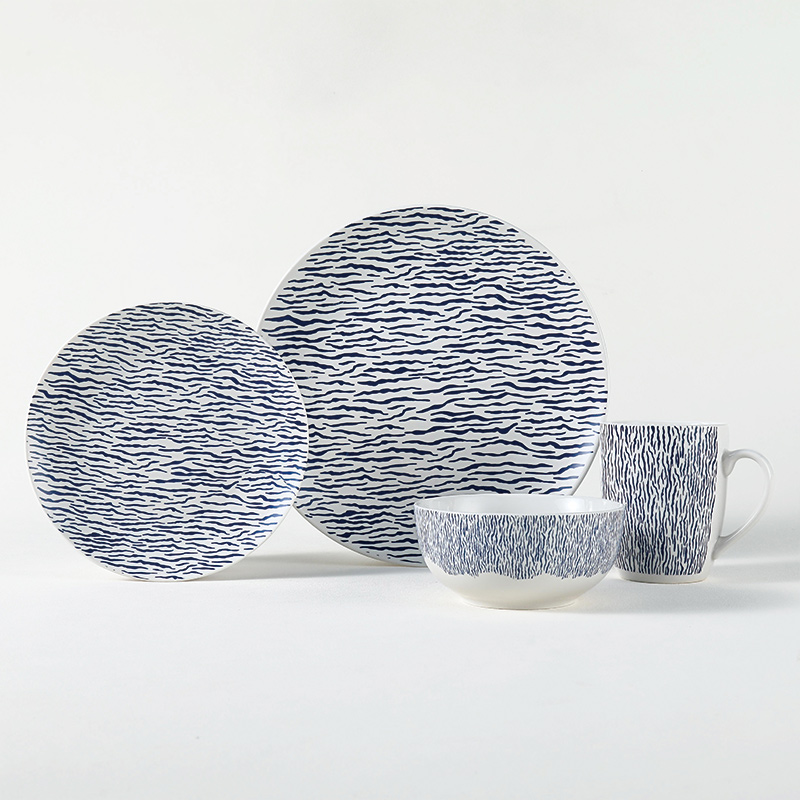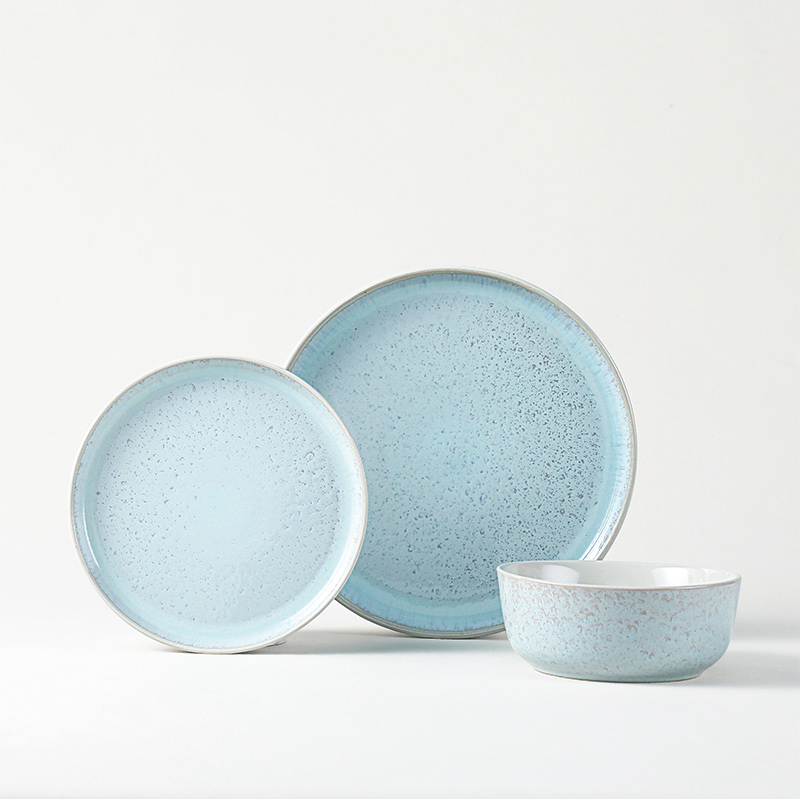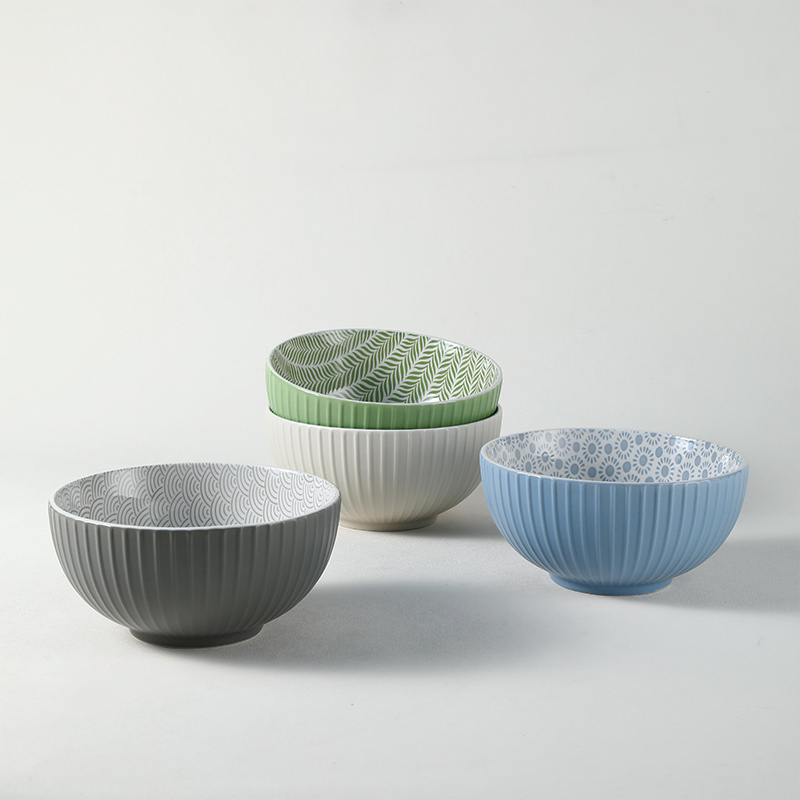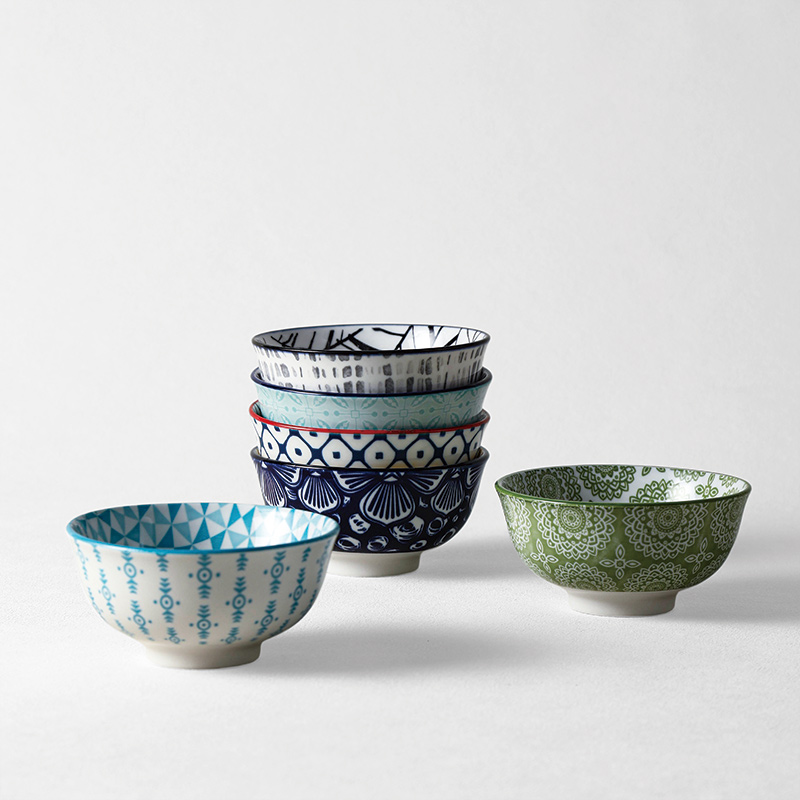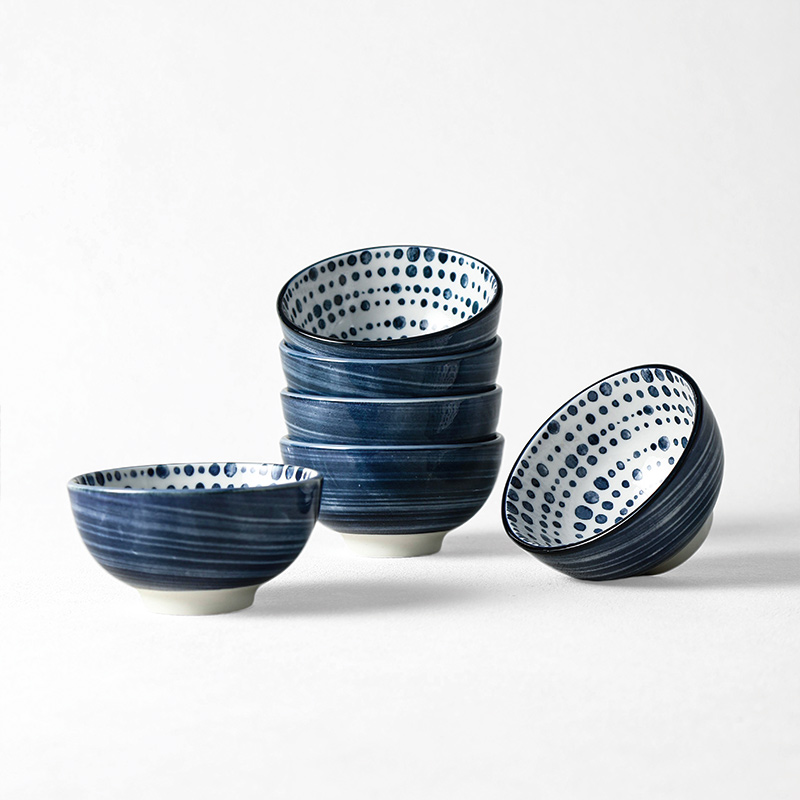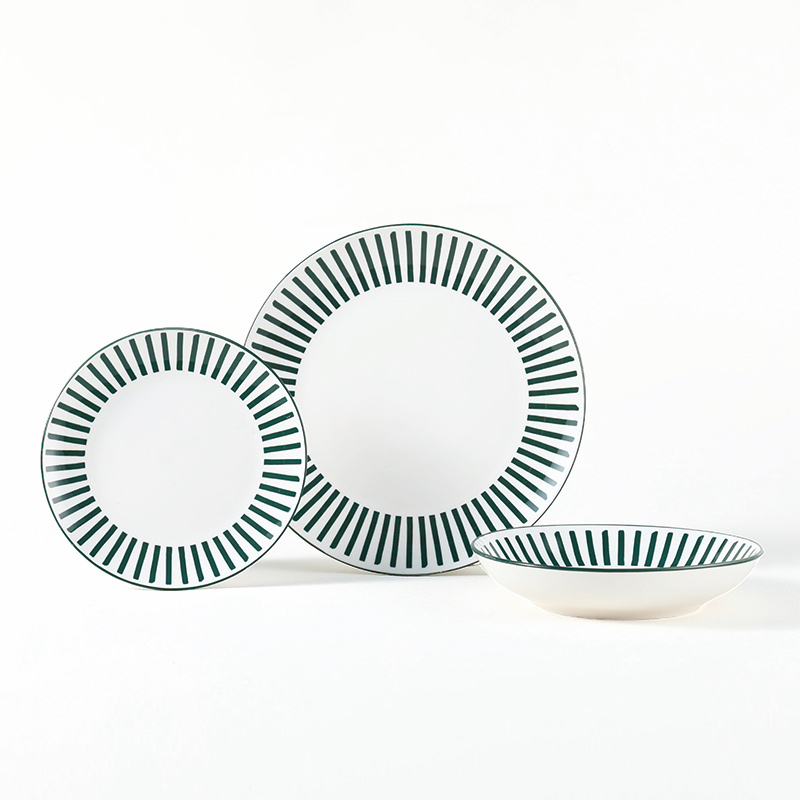The difference between overglaze color and underglaze color
underglaze colour
Underglaze color is a pattern drawn on the body of porcelain, then covered with a layer of transparent glaze, and finally fired at high temperature. The characteristics of this technology include:
Durability: Due to the pattern being located below the glaze layer, it is not easily worn and has a longer service life.
Color stability: High temperature firing makes colors more stable and less prone to fading.
Smooth Touch: Due to the pattern being covered by glaze, the surface is smooth and easy to clean.
overglaze color
Glazed color is the process of drawing patterns on the glazed surface of porcelain that has already been fired and then re firing at low temperatures. Its characteristics include:
Rich colors: Glazed colors can use a wider variety of colors, and the patterns are more diverse and colorful.
Strong sense of three dimensionality: Due to the pattern being on top of the glaze, multiple color overlays can be used to increase the sense of three dimensionality.
Suitable for complex patterns: For complex or delicate patterns, glaze color can better showcase details.

